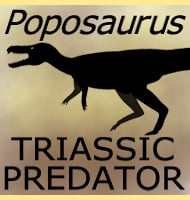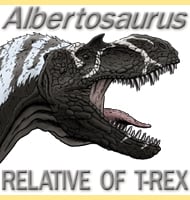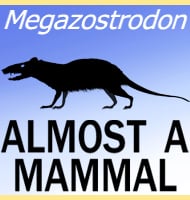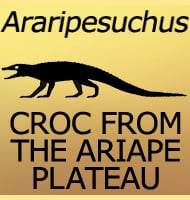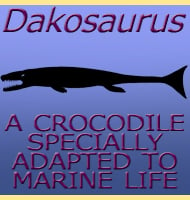In Depth
Drepanosaurus is the type genus of the Drepanosauridae, a special group of diapsid reptiles that are noted for having prehensile tails. What this means is that the tail could be wrapped around objects for additional grip. In addition to this there was a hook on the end of the tail that provided even greater grip. the feet and hands are also formed in such a way that they could easily grasp around things like branches, and these features combined have led to the generally accepted opinion that Drepanosaurus were arboreal in nature. This means that rather than run around on the ground, a Drepanosaurus would have spent its life climbing along the branches of trees. To further the climbing hypothesis, the skeletal structure of Drepanosaurus, particularly the limbs is very robust with attachment points for strong muscles that would have easily provided the strength for a Drepanosaurus to pull itself up a vertical surface.
One feature that really makes Drepanosaurus stand out from its relatives is the enlarged claw that grew out from the end of the second digit. So large was this claw that it was almost the same size as the rest of the actual hand. This claw might have been used for two reasons. One is that Drepanosaurus was quite large when compared to its other relatives; in fact the holotype skeleton of Drepanosaurus is more than double the length of its slightly more famous relative, Megalancosaurus. This would mean a greater weight and greater need for grip when climbing through the trees, but this reason does not satisfactorily explain the shape of the claw which is very thick and strongly curved. An alternative explanation is that the claw was used more for lifting up bark and digging into crevices and grooves on trees so that small invertebrates such as grubs could be reached and consumed.
Further Reading
- Drepanosaurus unguicaudatus, nuovo genere e nuova specie di Lepidosauro del trias alpino [New genus and new species of Triassic Alpine Lepidosaur]. - atti Soc. It. Sc.Nat. 121:181-192. - G. Pinna - 1980. - On Drepanosaurus unguicaudatus, an upper Triassic lepidosaurian from the Italian Alps. - Journal of Paleontology 50(5):1127-1132. - G. Pinna - 1986. - The shoulder girdle and anterior limb of Drepanosaurus unguicaudatus (Reptilia, Neodiapsida) from the upper Triassic (Norian of Northern Italy. - Zoological Journal of the Linnean Society 111(3):247-264 - S. Renesto - 1994.


